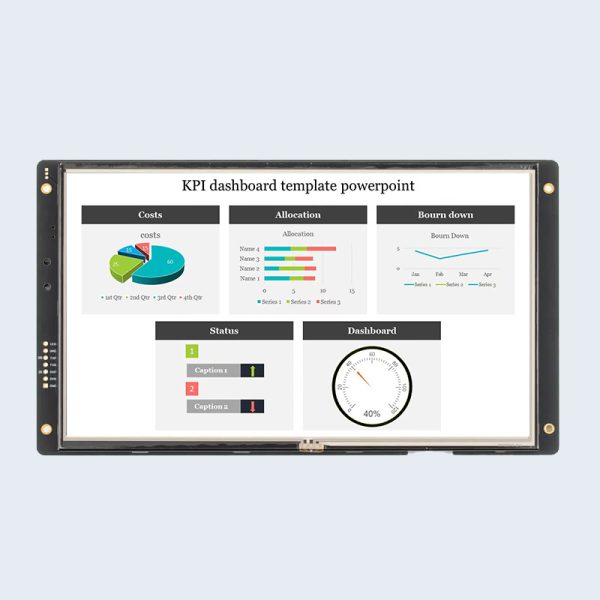电源设备是各行各业不可或缺的组成部分,为设备和系统提供稳定可靠的电力供应。组态屏在这些设备中发挥着关键作用,通过提供信息显示功能,实现监控、控制和诊断。本文将深入探讨串口屏的特点和优势,说明其为何适用于不同应用场景的电源设备。

显示清晰度与精确性的重要性
在电源供应设备中,串口屏是用户监测电压、电流、功率输出等关键参数的主要界面。高分辨率组态屏确保实时数据的清晰呈现,使操作人员能够基于准确信息做出电源管理和系统运行的决策。这一能力对于在多样化工业环境中维持效率、可靠性和安全性至关重要。
实时监控与数据可视化
实时监控对于检测异常并确保电源供应设备的最佳性能至关重要。配备先进图形处理能力的智能屏可通过图表、图形和数值显示实现直观的数据可视化。操作人员可快速评估运行状态、跟踪趋势并识别潜在问题,从而实现主动维护并最大限度地减少停机时间。
触摸屏界面提升用户交互体验
串口屏提供的触摸屏界面显著提升了电源设备中的用户交互体验。电容式触摸屏支持响应迅速的多点触控功能,提升用户体验和工作效率。操作人员可轻松浏览菜单、调整设置并执行故障排除任务,从而实现高效运行并快速响应运营变化或故障。
与控制系统及物联网的集成
集成能力是现代电源供应设备的关键,因其常在互联系统中运行。串口屏支持通过Modbus、Profibus和EtherNet/IP等标准通信协议与控制系统、可编程逻辑控制器(PLC)及物联网平台集成。这种无缝连接实现集中监控、远程控制和数据交换,提升系统灵活性与可扩展性。
适用于工业环境的坚固结构
电源设备部署于工业环境中,需承受温度波动、湿度及机械振动等严苛条件。专为工业应用设计的串口屏采用坚固结构,配备保护涂层和加强型框架。其经过严格测试,确保可靠性和耐用性,可在恶劣环境中稳定运行而不影响性能。
可定制显示屏满足多样化应用
显示屏定制化是串口屏在电源设备中的另一核心优势。制造商提供屏幕布局、颜色方案及数据呈现格式的可配置选项,以满足特定应用需求。这种定制能力使用户能够优先显示关键信息、设置报警阈值,并根据不同操作场景调整界面,从而提升易用性和效率。
能源效率与环境考量
能源效率和环境可持续性在电源设备中日益重要。串口屏通过采用低功耗技术和自动亮度调节功能,有助于提升能源效率。此外,符合RoHS(有害物质限制)等环境标准,确保串口屏在制造过程中对环境影响最小,与全球可持续性倡议保持一致。
串口屏技术在电源设备中的未来发展方向
展望未来,串口屏在电源设备中的应用将融入前沿技术并满足行业新兴需求。未来趋势可能包括OLED(有机发光二极管)显示技术的进步,以实现更高的能源效率和视觉质量。与AI(人工智能)算法的集成,用于预测性维护和自适应控制,有望进一步优化性能和可靠性。
结论
综上所述,串口屏是现代电源设备中不可或缺的组件,具备卓越性能、直观界面及关键数据可视化能力。其在提升运营效率、实现实时监测以及支持与先进控制系统集成方面的作用,凸显了其在多元化工业应用中的重要性。随着技术持续进步,串口屏将不断演进,推动全球电气动力系统管理领域的创新与效率提升。